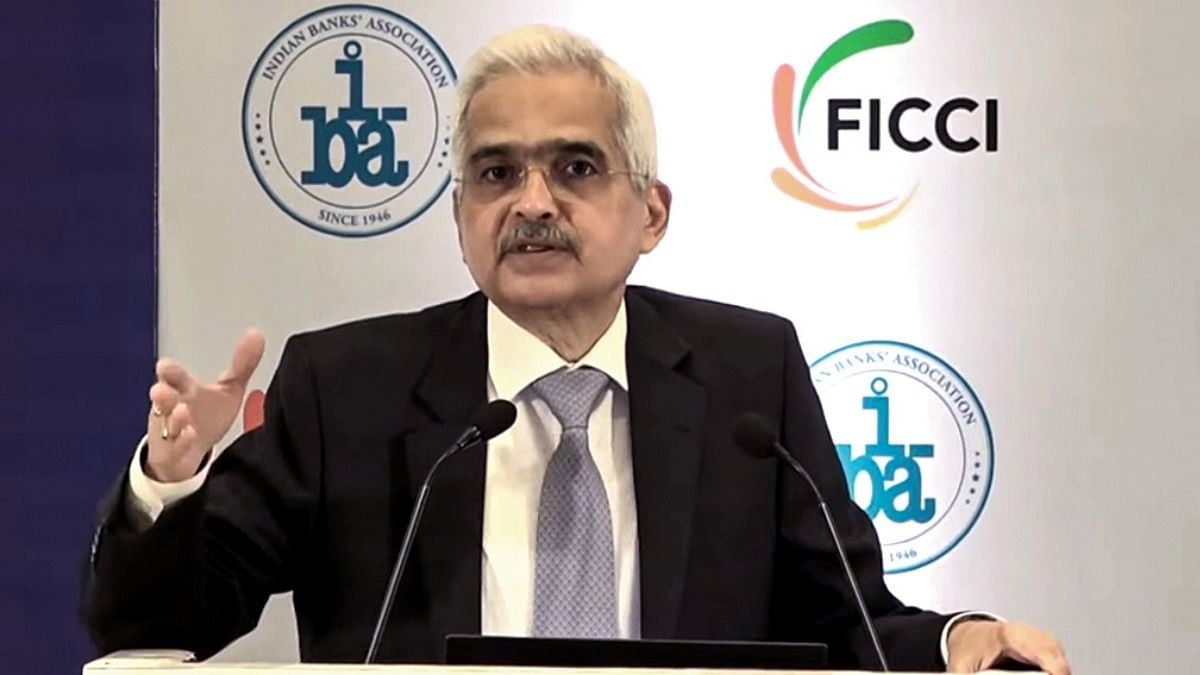New Delhi: Reserve Bank of India (RBI) Governor Shaktikanta Das painted a relatively rosy picture of the economy Friday while announcing that the central bank had substantially revised its GDP growth projection for this financial year upwards to 7 percent from its earlier estimation of 6.5 percent.
Das was delivering his statement conveying the decision of the RBI’s Monetary Policy Committee to leave the benchmark interest rate — the repo rate — unchanged at 6.5 percent.
Das highlighted a range of factors behind the upward revision in the year’s growth estimate, including the higher-than-expected growth in the second quarter, a continued strong showing by the manufacturing and services sectors, buoyant urban demand, signs of a turnaround in rural demand, and the healthy balance sheets of banks and corporates.
“Taking all these factors into consideration, real GDP growth for 2023-24 is projected at 7.0 percent with Q3 at 6.5 percent, and Q4 at 6.0 percent,” Das said.
“Real GDP growth for Q1 2024-25 is projected at 6.7 percent, Q2 at 6.5 percent, and Q3 at 6.4 per cent,” he added.
The RBI chief pointed out that easing input costs and improved demand in the third quarter (October to December 2023) had helped the manufacturing sector. This comes on the back of a robust 13.9 percent growth in the manufacturing sector in the second quarter.
Bolstering this was the index of eight core sectors of the economy that recorded a healthy growth in October, continuing their strong performance since June of this year, said Das.
Additionally, the Purchasing Managers’ Index (PMI) for the manufacturing sector — a survey conducted by a private sector company — also rose in November, he pointed out.
“The services sector buoyancy has remained intact as reflected in high-frequency indicators,” Das said, adding, “GST collections at Rs 1.68 lakh crore in November 2023 were buoyant. Services PMI displayed healthy expansion in November.”
Also Read: Loans to own directors, families — why Gujarat’s cooperative banks are increasingly under RBI scanner
‘Gradual turnaround in rural demand’
On the demand side, Das pointed out that consumption expenditure in the economy was supported by durable urban demand and a “gradual turnaround in rural demand” as reflected in sales of fast-moving consumer goods.
This comes at a time when the data released for the second quarter showed that the contribution of private final consumption expenditure to GDP had fallen compared with the same period of the previous year.
While Das said that investment activity was driven by public sector capital expenditure, he added that investments in fixed assets by listed private manufacturing companies also registered healthy growth in the first half of the financial year.
“Looking ahead, private consumption should gain support from gradual improvement in rural demand, strengthening of manufacturing activity and continued buoyancy in services,” he said.
“The healthy twin balance sheets of banks and corporates, high-capacity utilisation, continuing business optimism and government’s thrust on infrastructure spending should propel private sector capex.”
On the inflation front, the RBI governor said the situation had already improved considerably, with food inflation easing from double digits in July to 6.2 percent in October, adding that retail inflation is expected to be 5.4 percent for the full year 2023-24, with Q3 at 5.6 percent and Q4 at 5.2 percent.
(Edited by Richa Mishra)
Also Read: RBI’s key economists feel rising households debt could spur economic growth, contrary to worries

